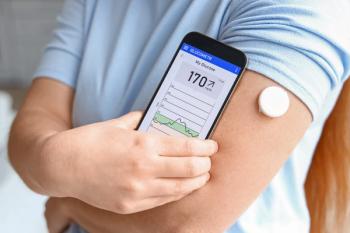
Rural Community Pharmacies Play Crucial Role in Pneumococcal Vaccine Access
Among rural community pharmacies in the US, researchers explored pneumococcal immunization services, the processes used to identify patient eligibility, and the barriers to vaccine administration.
With pneumococcal vaccines significantly prominent at rural community pharmacies, these specific locations play a crucial role in facilitating access to immunization services, according to a study published in Vaccines.1
“Vaccines for the prevention of pneumococcal disease have been available in the US for several years and have made a significant positive impact on disease burden,” wrote authors of the study. “However, vaccine uptake remains low in some adults.”
The most recent CDC statistics place the population of adults 65 or over at 65.8% vaccinated against pneumococcal disease. However, rates are much lower among individuals 19 to 64, exhibiting that just 22.2% of these adults have received the pneumococcal vaccine.2
READ MORE:
With it being reported significantly since the COVID-19 pandemic, pharmacists have established themselves as one of the most ideal providers for administering vaccines.3 However, amid growing concerns regarding pharmacy sustainability, pharmacy storefronts and their businesses have been struggling to keep their doors open. From 2018 to 2021, more pharmacies closed than opened, translating to exacerbated outcomes among various populations throughout the country.4
One of the most impacted communities when it comes to pharmacy deserts are individuals living in rural locales, which serve as destinations exhibiting some of the highest rates of pharmacy deserts in the US.5
“Understanding the current landscape of pneumococcal vaccination services is important to improve immunization rates, especially given recent recommendation changes,” they continued.1 “This study aims to describe the provision of pneumococcal immunization services, assess the processes used to identify and confirm patient eligibility, and determine barriers to pneumococcal immunization services in rural community pharmacies.”
With continuous updates to pneumococcal vaccine guidelines as well as depleting pharmacy access in rural communities, researchers wanted to better understand the role rural pharmacies play in boosting uptake. Currently, there are 3 different pneumococcal conjugate vaccines (PCVs) recommended in the US based on valency: PCV15, PCV20, and PCV21.6
To gain further evidence on how these vaccines are administered in rural communities, researchers conducted a cross-sectional survey assessing pneumococcal vaccines offered, age groups, prescription requirements, and how patient eligibility was determined at these pharmacies. They also had study participants address patient-related and organizational barriers to pneumococcal vaccine uptake.
A total of 94 working pharmacists completed the survey (50% women; 95.7% White).1
Highlighting both the rural pharmacist’s knowledge of pneumococcal vaccines and the accessibility of immunization at these locations, almost every survey respondent reported that their pharmacy offers the pneumococcal vaccine.
“Nearly all surveyed pharmacies (96.8%) offered pneumococcal vaccines, demonstrating the accessibility of immunization services in rural pharmacies,” they wrote. “The majority of pharmacists reported administering PCV20, reflecting widespread alignment with Advisory Committee on Immunization Practices (ACIP) guidelines that support this vaccine for its broader serotype coverage and simplified schedule.”
Furthermore, exhibiting pharmacists’ knowledge of vaccine guidelines, 92.3% of respondents administered vaccines to adults 19 to 64 and 100% of participants administered them to adults over 65. Finally, participants did not report any major patient-related or organizational barriers to pneumococcal vaccination.
As many previous studies before this have examined, community pharmacies as a whole demonstrate significantly ideal destinations to receive routine vaccination. Even with the complexities presented by continuously updated pneumococcal vaccine recommendations, rural pharmacists have demonstrated their increased knowledge in this space.
However, despite these pharmacies increasing access and uptake among rural communities, researchers still believe more can be done to improve patient knowledge of the importance of receiving immunizations, such as the pneumococcal.
“Despite current success in vaccine accessibility and alignment with guidelines, opportunities remain to improve vaccine uptake through enhanced patient education, reimbursement reforms, and more proactive engagement strategies, especially considering the expanded age-based recommendations,” concluded authors of the study.1 “As guidelines evolve and new vaccines become available, rural pharmacies will continue to play an essential role in addressing immunization accessibility and promoting public health.”
READ MORE:
Pharmacy practice is always changing. Stay ahead of the curve: Sign up for our
References
1. Chinchilla AH, Melton TC, Westrick SC, et al. A cross-sectional survey to identify current pneumococcal vaccination practices and barriers in rural community pharmacies. Vaccines. 2025;13(7):756. https://doi.org/10.3390/vaccines13070756
2. Vaccination coverage among adults in the United States, National Health Interview Survey, 2021. CDC. July 19, 2024. Accessed August 5, 2025. https://www.cdc.gov/adultvaxview/publications-resources/vaccination-coverage-adults-2021.html
3. Nowosielski B. Pharmacist-led interventions boost vaccine uptake in older adults. Drug Topics. August 5, 2025. Accessed August 5, 2025. https://www.drugtopics.com/view/pharmacist-led-interventions-boost-vaccine-uptake-in-older-adults
4. Guadamuz JS, Alexander GC, Kanter GP, et al. More US pharmacies closed than opened in 2018–21; independent pharmacies, those in Black, Latinx communities most at risk. Health Affairs. 2024;43(12):1703-1711. https://doi.org/10.1377/hlthaff.2024.00192
5. Wittenauer R, Shah PD, Bacci JL, et al. Locations and characteristics of pharmacy deserts in the United States: a geospatial study. Health Aff Sch. 2024 Mar 16;2(4):qxae035. doi: 10.1093/haschl/qxae035.
6. Types of pneumococcal vaccines. CDC. September 12, 2024. https://www.cdc.gov/pneumococcal/vaccines/types.html
Newsletter
Pharmacy practice is always changing. Stay ahead of the curve with the Drug Topics newsletter and get the latest drug information, industry trends, and patient care tips.




































































































































